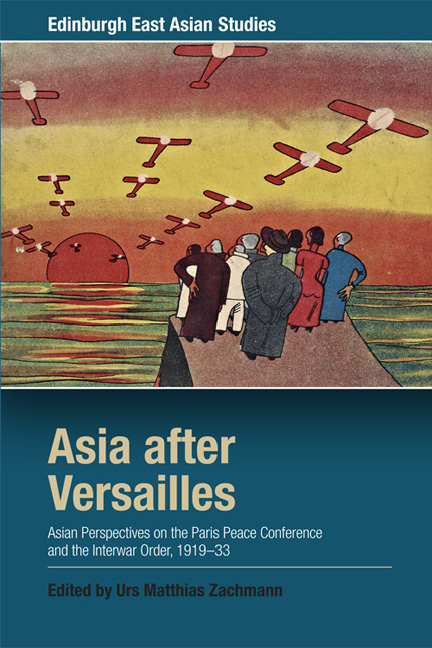 Asia after Versailles
Asia after Versailles Published online by Cambridge University Press: 22 December 2017
The Paris Peace Conference and its impact on interwar Asia
When the victorious Allied Powers convened in Paris in January 1919, they set themselves an immense task: after the cataclysmic event that had cost millions of lives, laid waste to whole regions of Europe, shattered or contributed to the downfall of four empires (German, Austro-Hungarian, Ottoman and Czarist) and generally seemed to symbolise the ‘suicide’ of Western civilisation, they had no lesser purpose than to create a new world order that should be just, universal and enduring. To this end, the Peace Conference and its five related treaties attempted to redraw the borders of half the world's continents, change the nationalities of millions of people in a brushstroke, reframe economic relations, create institutions that would contain or even outlaw war, and in general introduce a new style and ethos of doing international politics that was to be fundamentally different from the old balance-of-power imperialist politics. Negotiations had to be conducted under severe time constraints and faced a multitude of political and economic restrictions: soldiers and workers from all over the world were still stationed in Europe, waiting to be sent home; there were food shortages because of blockades; and revolutionary movements were springing up everywhere (such as the short-lived ‘Bavarian Soviet Republic’ that appeared during the Paris Peace Conference) and had to be contained, not to speak of keeping a wary eye on Bolshevik Russia. Time constraints were such that, famously, the representatives of the Allied Powers never saw the draft of the Versailles Treaty in full before it was printed and signed in the Hall of Mirrors in June 1919. On top of this, the almost messianic hopes that Wilson and his Fourteen Points of 1918 had raised among the masses globally, and which could be seen in the frenetic welcome that the President received when entering Paris, added another layer of pressure to the negotiations.
Considering these factors, it is probably understandable that the so-called Council of Four (but effectively just the ‘Great Three’ – Wilson, Lloyd George and Clemenceau) concentrated on what was most pressing on their minds – namely, peace and stability in Europe – and that non-European matters figured only as an afterthought.
To save this book to your Kindle, first ensure [email protected] is added to your Approved Personal Document E-mail List under your Personal Document Settings on the Manage Your Content and Devices page of your Amazon account. Then enter the ‘name’ part of your Kindle email address below. Find out more about saving to your Kindle.
Note you can select to save to either the @free.kindle.com or @kindle.com variations. ‘@free.kindle.com’ emails are free but can only be saved to your device when it is connected to wi-fi. ‘@kindle.com’ emails can be delivered even when you are not connected to wi-fi, but note that service fees apply.
Find out more about the Kindle Personal Document Service.
To save content items to your account, please confirm that you agree to abide by our usage policies. If this is the first time you use this feature, you will be asked to authorise Cambridge Core to connect with your account. Find out more about saving content to Dropbox.
To save content items to your account, please confirm that you agree to abide by our usage policies. If this is the first time you use this feature, you will be asked to authorise Cambridge Core to connect with your account. Find out more about saving content to Google Drive.